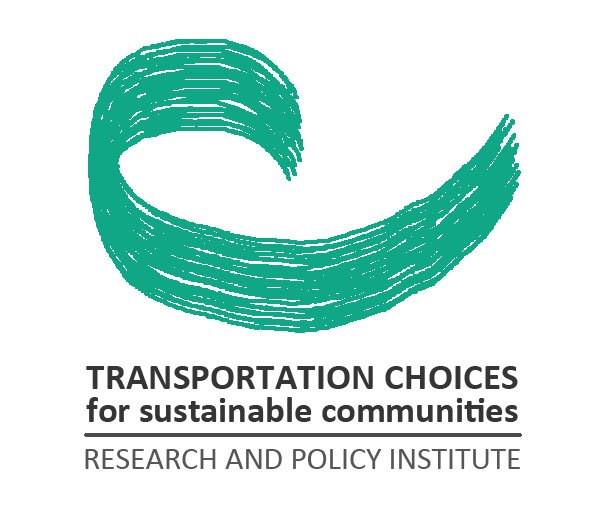
Transportation Choices for
Sustainable Communities
Vision:
Inspire shared vision and implementation of transportation choices that transform communities to be sustainable, equitable, resilient, and regenerative.
Mission:
To expand transportation choices to create more sustainable and equitable communities. To advance understanding and support for sustainable transportation as an essential component of livable communities and cities.
How We Work:
Conduct research and education on transportation for sustainable communities
Support a rapid transition to a zero-carbon transport system based on the "Avoid-Shift-Improve" framework
Evaluate ways of creating transportation systems that support community vitality and well-being
Recommend best practices to the public and decisionmakers in the public, nonprofit, and private sectors
Build bridges between theory and practice to increase capacity for communities to realize their potential by convening and supporting diverse stakeholders
Bring people together, share information and advocate in a variety of ways to achieve our vision, including seminars, events, the TCSC website and TCSC’s World Transport Policy and Practice Journal (WTPP)
Connect the academic and professional communities to encourage best practices in policy and planning at a global scale by publishing leading research in TCSC’s World Transport Policy and Practice Journal (WTPP)
We Serve:
Practicing professionals, public officials, researchers, teachers, students, community members, and advocates for sustainable transportation in the United States and around the world.
Photograph by Eric Sehr
Definitions:
A sustainable community integrates economic well-being, social justice, and a healthy environment that supports robust natural ecosystems and is free from greenhouse gas emissions and toxic pollution. Sustainable communities manage multiple objectives, for example, promoting holistic streets that balance space across all modes while at the same time encouraging best practices in landscape and water management to create a healthier place. Sustainable transportation is central to the health, including the social, environmental, and economic vibrancy of communities.
An equitable community ensures that everyone is included in the full benefits of society. In such a community, everyone is treated with fairness and justice and empowered to participate fully in social, cultural, and economic life. A healthy, equitable community is one that offers complete social, physical, and mental well-being to all its residents at all stages of life and has the following themes embedded across all the components: accessibility, affordability, stability, diversity, safety, equity. Equitable communities connect travelers to their chosen destinations using a diverse and robust set of transportation options for persons of all ages, incomes, ethnicities, cultures, and physical capabilities. Infrastructure designed for active transportation that integrates green infrastructure, including a healthy tree canopy and safe routes to schools and parks, can help build more equitable communities.
A resilient community has a strong social network and has infrastructure that can help people contend with the escalating consequences of climate disruption, including heat, drought, flooding, sea level rise, wildfires, extreme storms, and food insecurity. Resilience is promoted through both infrastructure adaptation to withstand disruptions and climate mitigation to reduce emissions that have adverse impacts on the climate.
A regenerative community incorporates sustainability and resilience as well as supporting a circular economy in which materials and natural resources are used, recycled, and reused as they would be in a natural ecosystem. Motorized transport of people and goods is minimized and carbon-free, powered by renewable energy and distributed smart grids. Public land devoted to streets and parking are designed to encourage public gathering, community use and healthy, biodiverse urban forests and wise management of water to benefit ecosystem vitality and resilience.
"Avoid-Shift-Improve" framework
Avoid: Reduce or avoid the need to travel. Avoid emissions through system efficiency, demand management and integrated land use planning.
Shift/Maintain: Shift to more environmentally friendly modes of transport. Strengthen public transport, 2 or 3 wheeled electric vehicles, biking and walking.
Improve: Improve the energy efficiency of transport modes and vehicle technology.

